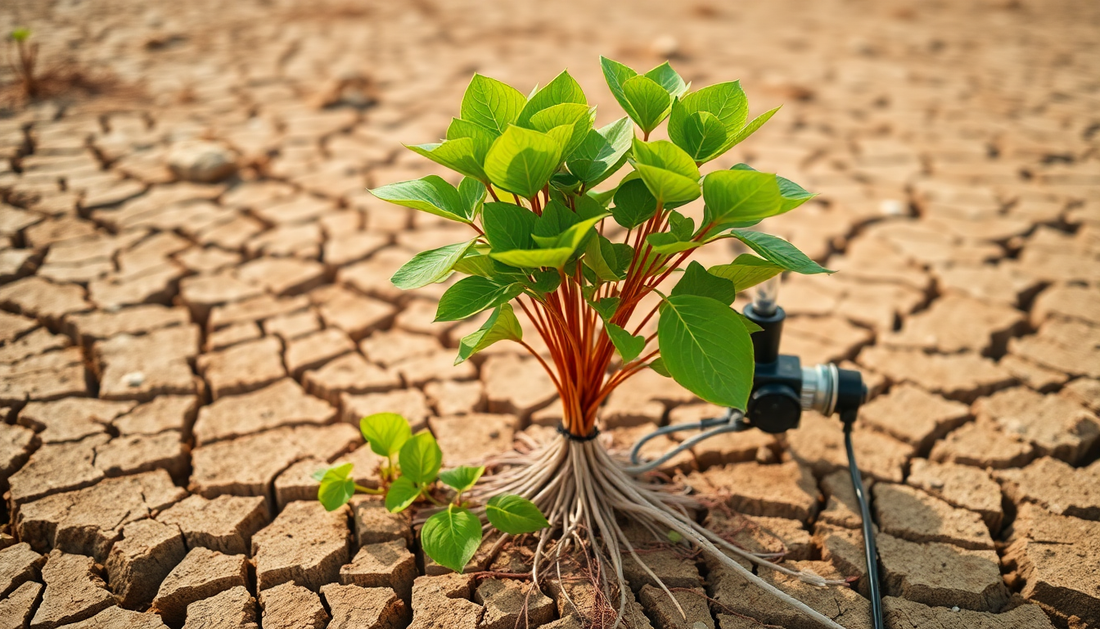
Can a Plant Survive with Zero Fertility? Understanding the Role of Nutrients in Plant Life
Plants are fascinating organisms that rely on a range of factors to grow and thrive—light, water, air, and nutrients. But what happens when one of those factors is missing? Specifically, can a plant survive with **zero fertility**, meaning a complete absence of nutrients? The short answer is: not for long. Plants require nutrients to sustain basic physiological processes, and without them, survival is only temporary.
In this guide, we’ll explore what zero fertility means, how plants respond to nutrient deprivation, and whether it’s possible for any plant to live in a completely nutrient-free environment.
What Is Zero Fertility?
Zero fertility refers to an environment that contains no nutrients available for plant uptake. This is different from low fertility, where only a small amount of nutrients is present. In a zero-fertility scenario, there are no macronutrients (such as nitrogen, phosphorus, and potassium) or micronutrients (such as iron, zinc, and manganese) available for the plant.
Essential Nutrients for Plant Life
Plants require a variety of nutrients to complete their life cycle. These nutrients can be divided into two main categories:
- Macronutrients: Nitrogen (N), phosphorus (P), potassium (K), calcium (Ca), magnesium (Mg), and sulfur (S).
- Micronutrients: Iron (Fe), manganese (Mn), zinc (Zn), copper (Cu), boron (B), molybdenum (Mo), and chlorine (Cl).
Each nutrient plays a specific role in plant growth and development. For example, nitrogen is essential for leaf growth and photosynthesis, while phosphorus supports root development and flowering.
What Happens to a Plant in a Zero-Fertility Environment?
In a zero-fertility environment, plants face immediate challenges. Here’s what typically happens:
1. Initial Growth from Stored Nutrients
Many plants can germinate and grow for a short time using stored nutrients within their seeds. During this stage, they rely on internal reserves of nitrogen, phosphorus, and potassium. However, once these reserves are depleted, the plant must absorb nutrients from its surroundings to continue growing.
2. Stunted Growth
Once the plant exhausts its stored nutrients, growth slows dramatically. Leaves may remain small, roots fail to develop properly, and the plant may appear weak and spindly.
3. Leaf Yellowing and Chlorosis
A lack of essential nutrients—especially nitrogen—leads to chlorosis, a condition where leaves turn yellow due to insufficient chlorophyll production. This affects the plant’s ability to photosynthesize and produce energy.
4. Wilting and Death
Without nutrients, the plant eventually loses the ability to sustain basic functions such as water uptake and cell repair. This leads to wilting and, ultimately, death.
Can Any Plant Survive with Zero Nutrients?
While most plants cannot survive long without nutrients, there are a few exceptions worth mentioning:
1. Carnivorous Plants
Carnivorous plants such as Venus flytraps, pitcher plants, and sundews have adapted to thrive in nutrient-poor environments by supplementing their diet with insects. Although they still require minimal nutrients from the soil, they obtain much of their nitrogen and phosphorus from their prey.
2. Air Plants (Tillandsia)
Air plants absorb nutrients and moisture directly from the air through specialized cells on their leaves. They don’t require traditional soil but still need trace nutrients found in dust, water, and air. In a completely sterile environment with zero nutrients, they would eventually die.
3. Seedlings in Controlled Experiments
In laboratory settings, researchers can grow plants in sterile, nutrient-free environments to study early development. However, these plants rely solely on their seed reserves and cannot survive beyond the seedling stage without external nutrients.
The Importance of Fertility for Long-Term Plant Health
Even if a plant can survive temporarily without nutrients, fertility is essential for long-term health and reproduction. Here’s why:
1. Photosynthesis and Energy Production
Many nutrients, such as nitrogen, magnesium, and iron, are key components of chlorophyll—the molecule responsible for photosynthesis. Without these nutrients, the plant cannot convert sunlight into energy.
2. Root Development
Phosphorus is crucial for root growth and development. A plant without phosphorus will have weak, underdeveloped roots, limiting its ability to absorb water and other nutrients.
3. Flowering and Reproduction
Potassium supports flowering and fruit production. In a zero-fertility environment, the plant will struggle to reproduce or produce seeds.
How to Maintain Fertility for Healthy Plant Growth
If you want to ensure your plants remain healthy and productive, maintaining fertility is crucial. Here are some tips:
1. Use High-Quality Soil
Start with nutrient-rich soil that contains a balanced mix of macronutrients and micronutrients. Organic matter such as compost can improve soil fertility over time.
2. Supplement with Fertilizer
If your growing medium lacks nutrients, use a balanced fertilizer to provide essential elements. Choose fertilizers tailored to your plant’s specific needs.
3. Monitor pH Levels
Maintain the correct pH level for your plants. An improper pH can lock out nutrients, making them unavailable even if they’re present in the soil.
4. Rotate and Replenish Soil
For outdoor growers, rotating crops and adding organic matter can help maintain soil fertility and prevent nutrient depletion.
Conclusion
While it’s possible for some plants to survive briefly without nutrients, no plant can live indefinitely in a zero-fertility environment. Nutrients are essential for growth, reproduction, and overall plant health. Understanding the importance of fertility and taking steps to maintain nutrient availability will ensure your plants thrive and reach their full potential.
